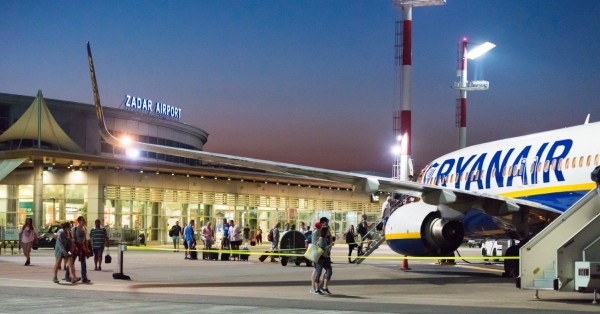The Icelandic government has initiated a program to assess the suitability of Low Earth Orbit (LEO) space-based connectivity across the Arctic nation in partnership with a satellite communications company, OneWeb.
The satellite company, which offers complete coverage over the Icelandic region via its Global Connectivity Solution, began the program at the beginning of 2023 by installing a pair of Dual Parabolic User Terminals (UTs) on the rooftop of a government building in Reykjavik with its strategic partner, GRC. The installation offers the country unrivaled connectivity via OneWeb’s resilient and robust network.
Iceland will initially evaluate OneWeb’s Global Connectivity Solution over the course of a three-month trial period. It will then have the option to extend services indefinitely, which could include the deployment of additional ground-based infrastructure as well as airborne, maritime, and on-the-pause/on-the-move UTs.
In October 2021, the Icelandic government published its “Policy on Matters Concerning the Arctic Region”. The policy is designed to enhance the welfare of inhabitants by ensuring access to digital communications, education, and health care services by telecommunications and satellite navigation systems, amongst other technologies. To test the resilience of the OneWeb LEO network, this new program is a critical step in seeing that through.
As the OneWeb LEO space-based connectivity program continues and its potential is realized, the use cases across Iceland become more and more prevalent. For example, the service could see a sovereign capability roll-out for the Icelandic Government that can be woven into a wider PACE (primary, alternate, contingency, and emergency) communications plan, to ensure secure and resilient connectivity across the whole country.
Chris Moore, Vice President of Defence and Security at OneWeb, says; “As a global leader in digital connectivity, Iceland’s Government is pioneering the use of LEO satcom for national resilience across its agencies, commercial sector, and local population. “Kissing the edge of the Arctic Circle, the volcanic island is the most remote of the eight Arctic nations and therefore experiences a number of connectivity challenges at high latitude. “OneWeb is ideally positioned to support the space-based connectivity requirements of government and commercial customers above the 50th Parallel North, also referred to as the ‘High North’, and we are excited to see how this program performs and its potential for the future.”
GRC Chairman Iain Pope commented, “OneWeb’s LEO network provides a resilient, high-bandwidth, low-latency and cost-effective option to government and enterprise users, delivering secure, reliable access to digital services, applications and communications that were often previously out of reach in remote regions. As a OneWeb distribution partner, we’re excited to offer users seamless access to easily accessible, high-speed internet, going beyond just a critical communications service and enabling reliable, secure ‘daily’ connectivity to open up new opportunities for agencies and businesses from all sectors.”
OneWeb’s Dual Parabolic UTs are capable of operating at temperatures between -40 to 55C, making it an ideal solution for cold weather operations like those in Iceland. Use cases include Border and Public Security; Maritime Awareness; Homeland Defence; Peacekeeping Support; and Humanitarian Aid/Disaster Relief. Terminals also support the welfare of personnel. The UTs, which ensure seamless satellite tracking and uninterrupted data transfer, weigh a combined total of 63kg. Individual protective domes measure 84.5 x 77cm and typically run at 150W in power consumption.
OneWeb’s Global Connectivity Solution provides government customers around the World with game-changing levels of connectivity. Part-owned by His Majesty’s Government and supported by international enterprise, OneWeb combines extensive satellite access and expansive terrestrial capacity to deliver multi-domain, resilient, and low electronic signature communications anywhere in the World, at any time. Its modern network architecture offers state-of-the-art cyber resilience and redundancy to ensure the high availability of services wherever they are required. Customers benefit from high data throughput up to 195mbps and latency levels as low as 70ms, ensuring near real-time command and control, reduced response times, and improved decision-making at the tactical edge.
Following its latest successful satellite launch on 26 March, OneWeb now has over 600 satellites in LEO, providing coverage across North America and Europe. And in June 2021, OneWeb also announced it had achieved its ‘Five to 50’ mission designed to deliver next-generation space-based connectivity to Alaska, Canada, the United Kingdom, Northern Europe, Greenland, and the wider Arctic region.
Customers connect to OneWeb’s LEO constellation using a family of UTs that ensure fixed, pause, and on-the-move communications, even at high speeds. Lightweight User Terminals can be installed on buildings and on the ground, maritime and airborne platforms, including UAVs, enabling secure and rapid data transfer and automation through machine learning and AI applications. Initial use cases include First Responders; Border Security; Maritime Surveillance; Peacekeeping Support; and Humanitarian Aid/Disaster Relief. By the end of 2023, OneWeb will provide customers with Communications On The Move and the ability to integrate Digital Age technologies into its network, including Cloud computing and the Internet of Things.
Source: OneWeb Press Release






















